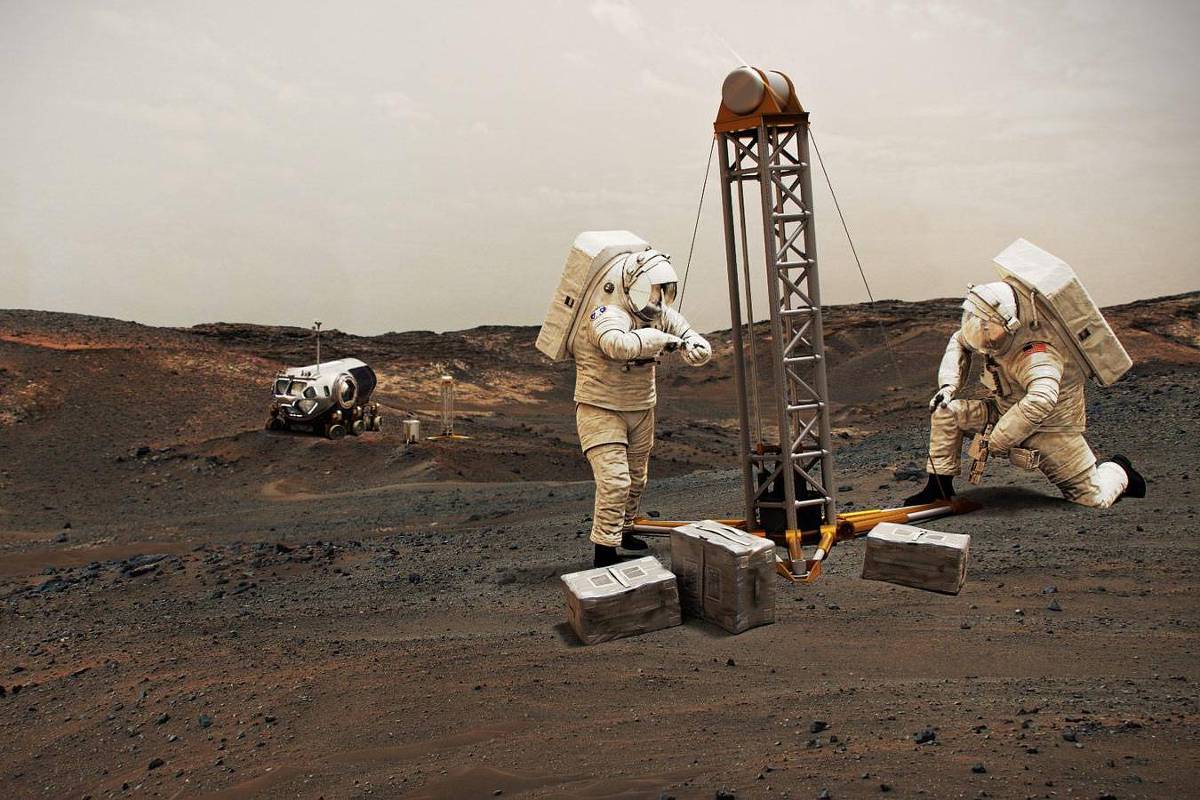NASA plans to send humans on a scientific mission to Mars and back, perhaps as early as 2035. The journey will take about six to seven months in each direction and cover up to 402 million kilometers in each direction. Astronauts will be able to spend up to 500 days on the surface of the Red Planet before returning to Earth.
The Artemis program, also from the US space agency, aims to return humans to the moon this decade to train and prepare for a mission to Mars in the 2030s. Although NASA has several reasons to pursue such an ambitious mission, the biggest is scientific exploration and discovery.
There are many mysteries to be investigated on the Red Planet, including why Mars looks the way it does today and whether it harbored life at all, past or present.
Geology of Mars
Mars is an interesting planet from a geological and atmospheric perspective. It formed with the rest of the solar system about 4.6 billion years ago. About 3.8 billion years ago, the same time that life formed on Earth, early Mars looked very much like Earth. Its surface had abundant liquid water in the form of oceans, lakes, and rivers, and a denser atmosphere.
Although the surface of Mars is completely devoid of liquid water today, scientists have discovered evidence of these lakes, rivers, and even an ocean coast on its surface. The North and South Poles are covered in frozen water, with a thin layer of frozen carbon dioxide. In Antarctica, during the summer, the layer of carbon dioxide disappears, leaving the frozen water exposed.
Currently, the atmosphere of Mars is very thin and consists of about 95% carbon dioxide. It is filled with atmospheric dust coming from the surface, which gives the Martian atmosphere its distinctive reddish color.
Scientists know a lot about the planet's surface from robotic missions, but there are still many interesting geological features that need to be studied more closely. These features can tell researchers more about the formation of the solar system.
The northern and southern hemispheres of Mars are very different. About a third of the surface of Mars – most of it in the Northern Hemisphere – lies at an altitude of 2 to 4 miles (3.2 to 6.4 km), which is called the “ground”. Northern lowlands. The northern plains have some large craters but are relatively smooth. The southern two-thirds of the planet, called the southern highlands, contain many very old craters.
Mars also contains the largest volcanoes that scientists have observed in the solar system. Its surface is full of deep craters caused by asteroid and meteorite impacts that occurred during the planet's early history. Sending astronauts to study these features could help researchers understand how and when key events occurred in early Mars.
Ask the right questions
NASA has formed a committee called the “Human Mars Exploration Science Analysis Group” to plan the future mission. I co-chaired the committee, with NASA scientist James B. Garvin, to develop and evaluate key scientific questions about Mars. We wanted to know which research questions should be addressed by a human mission, rather than cheap automated missions.
The committee made recommendations on several scientific questions important for human research on Mars.
One question is whether there is life on the planet today. Remember, life on Earth formed about 3.8 billion years ago, when Earth and Mars were similar planets, both with abundant liquid water, but the second planet had a denser atmosphere.
The other question is what kind of environmental changes caused Mars to lose the abundant liquid water spread on its surface, as well as part of its atmosphere.
These questions, along with other recommendations from the committee, are included in the report NASA's plan to send humans to Mars.
How to get to Mars?
To send humans to Mars and return them safely to Earth, NASA developed a new, very powerful launch vehicle called the Space Launch System (SLS) and a new human-carrying spacecraft called Orion.
To prepare and train astronauts to live on and explore Mars, the agency created a new program to return humans to the Moon, called Artemis.
In mythology, Artemis was the twin sister of Apollo. The Artemis astronauts will live and work on the Moon for several months to prepare for living and working on Mars.
SLS and Orion were successfully launched on November 16, 2022, as part of the Artemis 1 mission. This was the Artemis program's first uncrewed flight to the Moon. Once there, Orion orbited the Moon for six days, reaching an altitude of just 129 kilometers. Its surface.
Artemis 1 returned to Earth in December 2022, after its maiden flight of 2.2 million kilometres.
The Artemis 3 mission, the first mission to return humans to the lunar surface, is scheduled for 2026. The Artemis astronauts will land at the moon's south pole, where scientists say they believe there may be large deposits of groundwater in the form of ice that astronauts can Extract it. It is dissolved, purified and drunk. Artemis astronauts will create habitats on the lunar surface and spend several months exploring the lunar surface.
As is the moon Only 386 thousand kilometers from EarthIt will serve as a training ground for future human exploration of Mars. Although sending a mission to Mars is still many years away, the Artemis program will help NASA develop the capabilities needed to explore the Red Planet.
This article was published in Chat Brazil It is reproduced here under a Creative Commons license. Click here To read the original version


